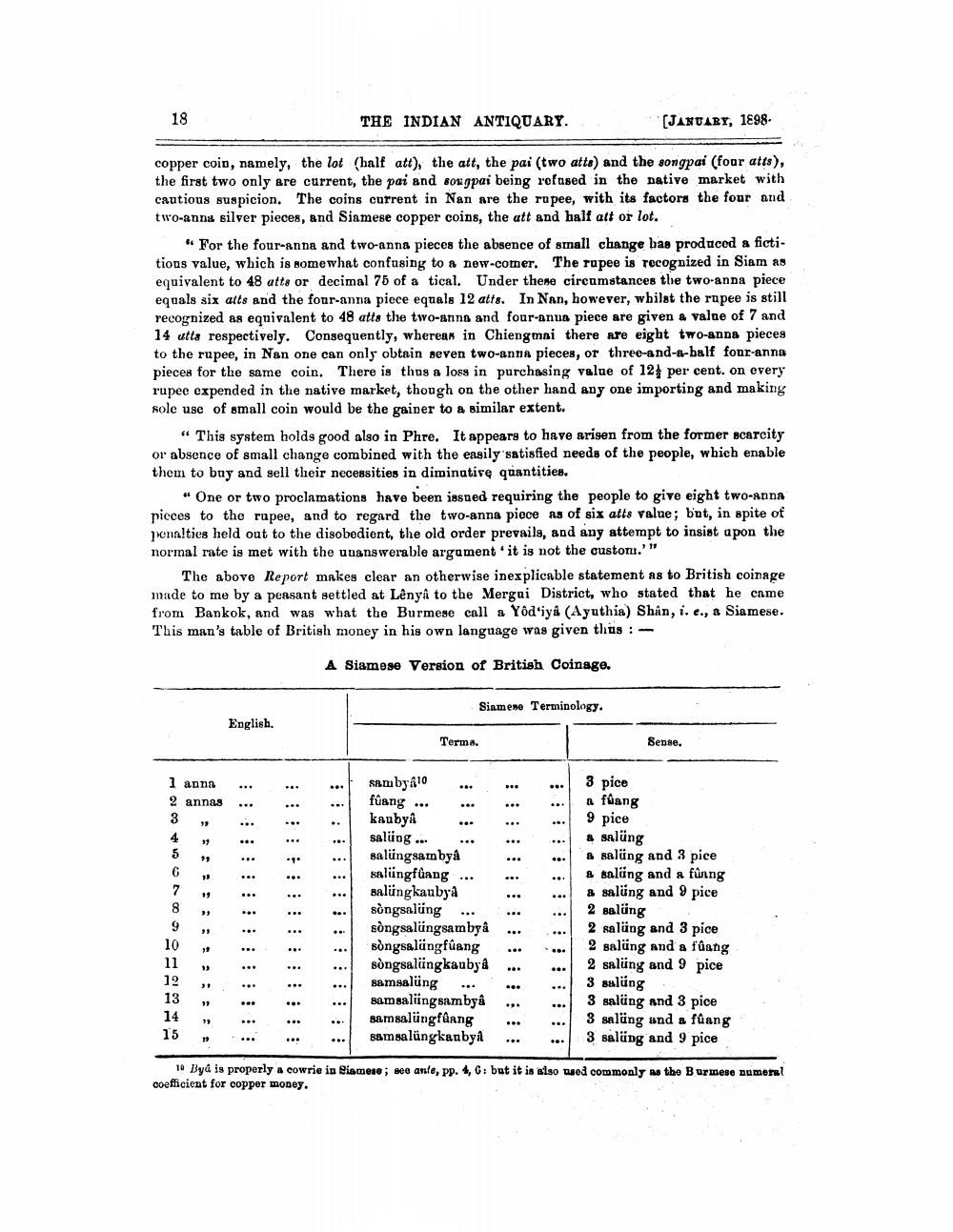________________
18
THE INDIAN ANTIQUARY.
(JANUARY, 1898.
copper coin, namely, the lot (half att), the att, the pai (two atta) and the songpai (four atts), the first two only are current, the pai and sou gpai being refused in the native market with cautious suspicion. The coins current in Nan are the rupee, with its factors the four and two-anna silver pieces, and Siamese copper coins, the att and half att or lot.
“For the four-anna and two-anna pieces the absence of small change bas produced a fictitious value, which is somewhat confusing to a new-comer. The rupee is recognized in Siam as equivalent to 48 atts or decimal 75 of a tical. Under these circumstances the two-anda piece equals six atts and the four-anna piece equals 12 atte. In Nan, however, whilst the rupee is still recognized as equivalent to 48 atts the two-anns and four-anva piece are given a value of 7 and 14 utts respectively. Consequently, wheream in Chiengmai there are eight two-anpa pieces to the rupee, in Nan one can only obtain seven two-anna pieces, or three-and-a-half four-anna pieces for the same coin. There is this a loss in purchasing value of 12 per cent. on every rupee expended in the native market, though on the other hand any one importing and making sole use of small coin would be the gainer to a similar extent.
“This system holds good also in Phre. It appears to have arisen from the former scarcity or absence of small change combined with the easily satisfied needs of the people, which enable them to buy and sell their necessities in diminative quantities.
“One or two proclamations have been issued requiring the people to give eight two-anna pieces to the rupee, and to regard the two-anna piece as of six atts value; but, in spite of penalties held out to the disobedient, the old order prevails, and any attempt to insist upon the normal rate is met with the unanswerable argument it is not the customi.'"
The above Report makes clear an otherwise inexplicable statement as to British coinage made to me by a peasant settled at Lênyâ to the Mergai District, who stated that he came from Bankok, and was what the Burmese call a Yod'iya (Ayuthia) Shân, i. e., a Siamese. This man's table of British money in his own language was given thus :
A Siamese Version of British Coinage.
Siamese Terminology.
English.
Terma.
Sense.
1 anna
2 annas
samu bylo füang ... kaubya ... saling ... ... salüngsambya saliingfúang ... Balungkaubya songsalüng ... sòngsalangsambya songsalingfũang songsalingkabya samsalung ... samsalingsambya samsalüngfdang samsalungkaabya
3 pice a fuang 9 pice a salung & salüng and 3 pice & saling and a fünng a salung and 9 pice 2 saling 2 salüng and 3 pice 2 salang and a fúang 2 salüng and 9 pice 3 sulüng 3 salüng and 3 pice 3 salang and a füang 3 salüng and 9 pice
... ... ... ...
15
→
....
19 Byd is properly a cowrie in Siamese; no ante, pp. 4,C: but it is also used commonly as the Burmese numeral coefficient for copper money.




